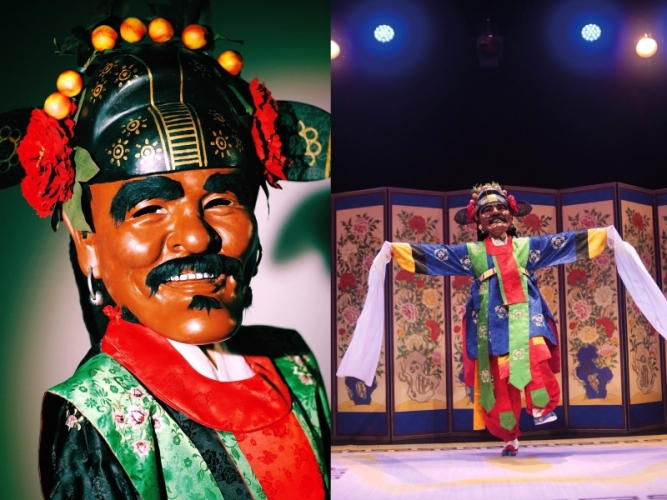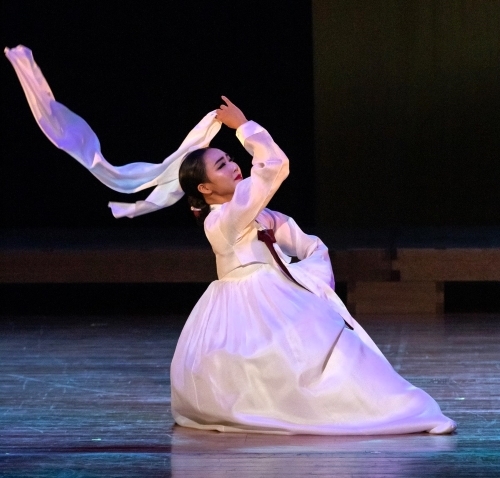- 한국어
- English
- 日本語
- 中文
- العربية
- Español
- Français
- Deutsch
- Pусский
- Tiếng Việt
- Indonesian
By Honorary Reporter Foteini Chatzoudi from Greece
Photos = Byeon Sang-ah
Cheoyongmu (Dance of Cheoyong), a National Intangible Cultural Heritage and UNESCO Intangible Cultural Heritage of Humanity, is a mask court dance that dates back to the ancient Silla Kingdom.
Byeon Sang-ah, a choreographer of traditional dance, earned her degree and trained in Cheoyongmu. She has since taken part in related performances and projects in Korea and abroad like in Tajikistan, France, Italy and Japan. This year, she performed at Le Havre University in France.
As Cheoyongmu is relatively unknown outside of Korea, I wanted to learn and help spread awareness of Korean traditional dances.
The following are excerpts from an email interview with her from June 7-13.

On the left is the Cheoyongmu mask and on the right is choreographer Byeon Sang-ah performing the dance.
I grew acquainted with court dance through my mother, a practitioner of traditional dance, and a dancer whom I greatly admire. Among all the traditional dances I've learned, Cheoyongmu stood out to me the most.
What are the most challenging aspects of the dance?
Moving slowly while wearing a large mask and multi-layered delicate costumes is quite exhausting and can appear monotonous from the audience's perspective. It demands consistent self-discipline and constant practice. My ultimate goal is to promote traditional Korean culture through my performances and study of traditional dance.
What is the significance of the mask and costume?
The mask was designed to mimic the face of Cheoyong, son of the Dragon King of the East Sea. Wearing this mask and performing the dance were believed to ward off evil spirits and disease and bring blessings. The costume features decorations that embody the ideologies of Confucianism, Buddhism and Taoism. Its five colors -- blue, red, yellow, black and white -- each represent a season and direction.

Byeon Sang-ah performs the folk exorcism dance salpurichum.
I'm learning other forms of court dance, and I particularly enjoy Bosangmu (Treasure Table Dance), which involves a ball game. Dancers split into two teams who turns throwing a ball toward a jar while dancing. Those who score receive rewards and those who don't face penalties. This makes it enjoyable for both dancers and the audience.
What do you find most rewarding about Cheoyongmu?
I find it rewarding when audiences share their thoughts and views watching Cheoyongmu for the first time. It encourages me to further promote the dance, which isn't widely known. I look forward to connecting with diverse audiences and giving performances at home and abroad.
msjeon22@korea.kr
*This article is written by a Korea.net Honorary Reporter. Our group of Honorary Reporters are from all around the world, and they share with Korea.net their love and passion for all things Korean.